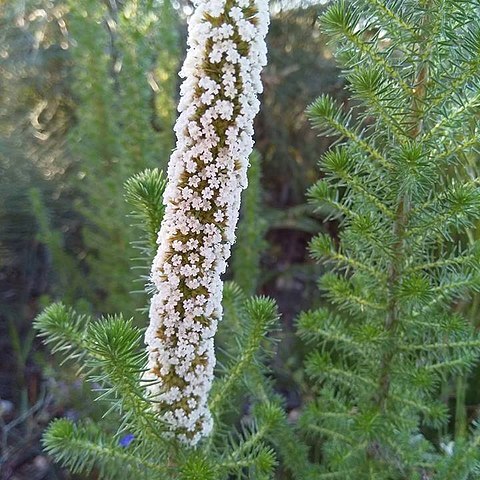Robust, erect, single-stemmed shrub, up to 1.8 m high. Branches often candelabrum-like, covered with rather shaggy hairs; very densely leafy. Brachyblasts many, generally 10-30 mm long. Leaves filiform, ericoid, spirally twisted, usually < 10 mm long, apex mucronate. Synflorescences thick, finger-like, terminal spikes (20-)50-150 x 1520 mm; involucral bracts ± 13; outer much shorter than inner, partly foliaceous, tomentose, apex obtuse; inner bracts scarious and brown, apex acuminate. Florets white, lobes spreading. Nectaries absent. Pollen spines short. Flowering time (July) Aug.-Nov. (Dec.). Pappus of 15-19 setae, free, plumose in upper part. Cypselae with ± 10 ribs, tomentose.
Robust, thinly hairy, grey shrub to 10 cm. Leaves stiffly needle-like with involute margins, spreading, twisted. Flower heads discoid, massed in elongate spikes, florets conspicuous, white; bracts brown.

